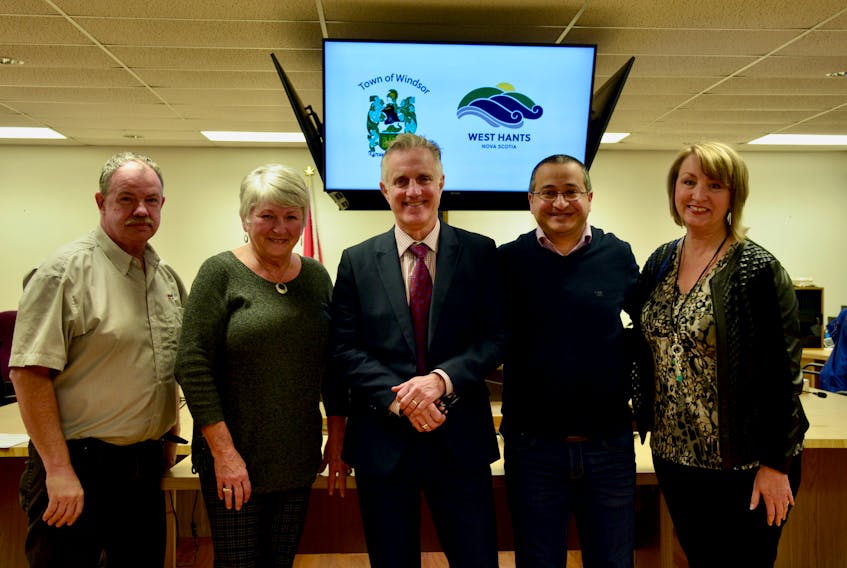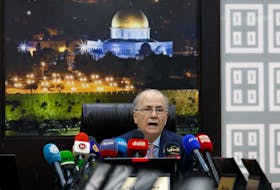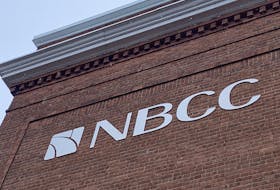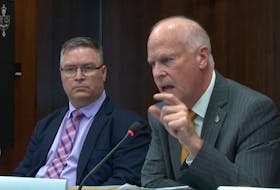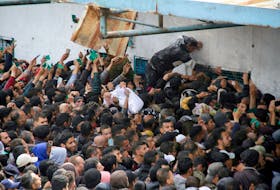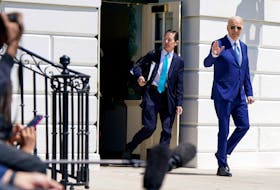WINDSOR, N.S. – During the second Windsor West Hants Co-ordinating Committee meeting, which took place in Windsor council chambers, details on how the public would be polled on electoral boundaries became a bit clearer.
Although, some details are still being worked out.
John Heseltine, the project manager in charge of the Stantec study on the new region’s boundaries, spoke to the committee and members of the public on how the process would unfold.
Boiled down, the intent is to get feedback from the public on what they’d like to see in terms of the number of councillors and a general sense of the boundary lines, take that to the committee and then go through the Nova Scotia Utility and Review Board for approval, as they ultimately have the final say on what the boundaries will look like.
Heseltine has worked on approximately a dozen other boundary reviews, which every municipality with electoral boundaries is mandated to do every eight years. He worked on the dissolution of Hantsport.
“The process we’re following is quite set,” Heseltine said in his presentation to the committee on Jan. 10.
The first phase of the Stantec study will be to determine the preferred size of the new council and the number of districts.
Currently, the Municipality of West Hants has 10 districts, including a warden, which is appointed by council, while the Town of Windsor elects four councillors and a mayor at large, meaning there are no districts within the town limits.
“There’s lots of avenues for public input,” Heseltein said, adding that at least 10 public meetings and an online survey will be conducted over the next three months. Those public meetings will be held throughout Windsor and West Hants.
Kevin Latimer, the transition co-ordinator and chairman of the co-ordinating committee, said “what we’re about here is different than (a dissolution or boundary review), in the sense that we’re really building a new regional municipality from scratch,” rather than re-orienting existing boundaries.
He added that this process isn’t entirely new, with three other regional municipalities being created over the last few decades, including Halifax Regional Municipality, Region of Queens Municipality and Cape Breton Regional Municipality.
Read More:
Transition committee kicks off consolidation
Legislature passes Windsor-West Hants consolidation bill
Depending on community feedback, there may be one or more options for the new council’s size for the co-ordinating committee to deliberate on. For example, one scenario may have 10 districts, another scenario may have 15, and so on.
Phase two is all about looking at those new boundaries and how they should fit within the population – so Stantec will need to establish how many councillors there will be before this process can begin.
Heseltine said the process is heavily determined by mapping and population distribution, using data from voter lists, which includes civic addresses.
“A key consideration (of electoral district boundaries) is to create electoral districts that are balanced in terms of the number of constituents,” he said. “We already have that data and have plotted out some of it.”
Heseltine said he’s not concerned about the shortness of the deadline to obtain public feedback.
“We’ve done these in less than three months before,” he said. “We’re hoping to complete the first phase by the middle of February this year. We’re aiming to finish by the end of the month of March.”
The survey, which will be posted online in the coming weeks, will take approximately five minutes to fill out, he said.
The co-ordinating committee will vote on the recommendations brought forward by Stantec and submit that to the UARB for approval.
Generally the UARB requires electoral districts to have a similar population distribution, plus or minus 10 per cent, unless special designation is given to a community of interest, which is what happened to Hantsport after the community dissolved its charter and joined West Hants.
The Valley Journal-Advertiser has asked for specific locations, dates and times for the public meetings, but has not heard back as of press time.
Co-ordinator clarifies role
Latimer also made a presentation to the co-ordinating committee, clarifying the committee’s mandate and role as the new regional municipality takes shape.
“Under the legislation, the co-ordinating committee is responsible for designing and implementing the administrative structure of the new regional municipality,” he said.
“Part of that responsibility is to try and see things through the lens of the best interests of that new regional municipality. It’s important to have a future, forward-looking gaze,” he said.
“The co-ordinating committee has all of the powers of the regional municipality until the new council takes office in 2020, which I think it significant,” he added. “For the things that need to be done, the legislation makes it clear that the co-ordinating committee has a responsibility to make sure it happens.”
The transition co-ordinator will decide any tie votes on the committee, giving him the most power if, say, the Windsor and West Hants members of the committee find themselves at an impasse.
The co-ordinating committee, which is comprised of two representatives from the Town of Windsor council, two from West Hants’ council, and the co-ordinator, has a fairly ambitious agenda and mandate, with the end goal of merging the two units into one by April 1, 2020.
The committee will also interview and select a CAO for the new regional council by Jan. 1, 2020, although Latimer suggested hiring them earlier to ensure they can hit the ground running.
Until a different name is selected by the incoming council, the area will be known as the Region of Windsor and West Hants Municipality.
The election of the new, regional municipality’s councillors and mayor is scheduled to take place on March 7, 2020.
The co-ordinating committee also approved the Town of Windsor’s funding application requests on two major infrastructure projects, previously approved by the town council.
The next co-ordinating committee meeting is set for Jan. 24 at the West Hants council chambers.

